Potřebujeme váš souhlas k využití jednotlivých dat, aby se vám mimo jiné mohly ukazovat informace týkající se vašich zájmů. Souhlas udělíte kliknutím na tlačítko „OK“.
ASTM E1706-05(2010)
Standard Test Method for Measuring the Toxicity of Sediment-Associated Contaminants with Freshwater Invertebrates (Withdrawn 2019)
Automaticky přeložený název:
Standardní zkušební metoda pro měření toxicity sedimentu spojené s kontaminující látky s sladkovodní bezobratlé
NORMA vydána dne 1.9.2010
Informace o normě:
Označení normy: ASTM E1706-05(2010)
Poznámka: NEPLATNÁ
Datum vydání normy: 1.9.2010
Kód zboží: NS-42734
Počet stran: 119
Přibližná hmotnost: 388 g (0.86 liber)
Země: Americká technická norma
Kategorie: Technické normy ASTM
Kategorie - podobné normy:
Anotace textu normy ASTM E1706-05(2010) :
Keywords:
bioavailability, Ceriodaphnia dubia, Chironomus riparius, Chironomus dilutus, contamination, Daphnia magna, Diporeia spp., Hexagenia spp., Hyalella azteca, invertebrates, sediment, toxicity, Tubifex tubifex, cladoceran, midge, amphipod, mayfly, oligochaete, Biological data analysis--sediments, Ceriodaphnia dubia, Chironomus Riparius, Chironomus Tentans, Contamination--environmental, Daphnia magna, Data analysis--environmental, Diporeia, Fresh water, Hexagenia, Hyalella Azteca
Doplňující informace
| Significance and Use | ||||||||||||||||||||||||||||||||||||||||||||||||||
|
General: Sediment provides habitat for many aquatic organisms and is a major repository for many of the more persistent chemicals that are introduced into surface waters. In the aquatic environment, most anthropogenic chemicals and waste materials including toxic organic and inorganic chemicals eventually accumulate in sediment. Mounting evidences exists of environmental degradation in areas where USEPA Water Quality Criteria (WQC; (65)) are not exceeded, yet organisms in or near sediments are adversely affected (66). The WQC were developed to protect organisms in the water column and were not directed toward protecting organisms in sediment. Concentrations of contaminants in sediment may be several orders of magnitude higher than in the overlying water; however, bulk sediment concentrations have not been strongly correlated to bioavailability (67). Partitioning or sorption of a compound between water and sediment may depend on many factors including: aqueous solubility, pH, redox, affinity for sediment organic carbon and dissolved organic carbon, grain size of the sediment, sediment mineral constituents (oxides of iron, manganese, and aluminum), and the quantity of acid volatile sulfides in sediment (40, 41). Although certain chemicals are highly sorbed to sediment, these compounds may still be available to the biota. Chemicals in sediments may be directly toxic to aquatic life or can be a source of chemicals for bioaccumulation in the food chain. The objective of a sediment test is to determine whether chemicals in sediment are harmful to or are bioaccumulated by benthic organisms. The tests can be used to measure interactive toxic effects of complex chemical mixtures in sediment. Furthermore, knowledge of specific pathways of interactions among sediments and test organisms is not necessary to conduct the tests (68). Sediment tests can be used to: (1) determine the relationship between toxic effects and bioavailability, (2) investigate interactions among chemicals, (3) compare the sensitivities of different organisms, (4) determine spatial and temporal distribution of contamination, (5) evaluate hazards of dredged material, (6) measure toxicity as part of product licensing or safety testing, (7) rank areas for clean up, and (8) estimate the effectiveness of remediation or management practices. A variety of methods have been developed for assessing the toxicity of chemicals in sediments using amphipods, midges, polychaetes, oligochaetes, mayflies, or cladocerans (Section 13 and 14; Annex A1 to Annex A5; (2), (4), (356), (390). Several endpoints are suggested in these methods to measure potential effects of contaminants in sediment including survival, growth, behavior, or reproduction; however, survival of test organisms in 10-day exposures is the endpoint most commonly reported. These short-term exposures which only measure effects on survival can be used to identify high levels of contamination in sediments, but may not be able to identify moderate levels of contamination in sediments (USEPA (2); Sibley et al., (54); Sibley et al., (55); Sibley et al., (69); Benoit et al., (70); Ingersoll et al., (56)). Sublethal endpoints in sediment tests might also prove to be better estimates of responses of benthic communities to contaminants in the field (18). The previous version of this standard (Test Method E1706-95b) described 10-day toxicity tests with the amphipod Hyalella azteca and midge Chironomus dilutus (formerly known as C. tentans; Shobanov et al. 1999.(1), (see Section 13 and 14). This version of the standard now outlines approaches for evaluating sublethal endpoints in longer-term sediment exposures with these two species (Annex A6 and Annex A7). |
||||||||||||||||||||||||||||||||||||||||||||||||||
| 1. Scope | ||||||||||||||||||||||||||||||||||||||||||||||||||
|
1.1 This test method covers procedures for testing freshwater organisms in the laboratory to evaluate the toxicity of contaminants associated with whole sediments. Sediments may be collected from the field or spiked with compounds in the laboratory. 1.1.1 Test methods are described for two toxicity test organisms, the amphipod Hyalella azteca ( H. azteca) (see 13.1.2) and the midge Chironomus dilutus (formerly known as C. tentans; Shobanov et al. 1999.(1) (see 14.1.2). The toxicity tests are conducted for 10 days in 300-mL chambers containing 100 mL of sediment and 175 mL of overlying water. Overlying water is renewed daily and test organisms are fed during the toxicity tests. Endpoints for the 10-day toxicity tests are survival and growth. These test methods describe procedures for testing freshwater sediments; however, estuarine sediments (up to 15 ppt salinity) can also be tested with H. azteca. In addition to the 10-day toxicity test method outlined in 13.1.2 and 14.1.2, general procedures are also described for conducting 10-day sediment toxicity tests with H. azteca (see 13.1.2) and C. dilutus (see 14.1.2). |
||||||||||||||||||||||||||||||||||||||||||||||||||
| 2. Referenced Documents | ||||||||||||||||||||||||||||||||||||||||||||||||||
|
Podobné normy:
Historická
1.5.2011
Historická
1.9.2012
Historická
1.9.2012
Historická
1.9.2012
Historická
1.9.2012
Historická
1.9.2012
Doporučujeme:
EviZak - všechny zákony včetně jejich evidence na jednom místě
Poskytování aktuálních informací o legislativních předpisech vyhlášených ve Sbírce zákonů od roku 1945.
Aktualizace 2x v měsíci !
Chcete vědět více informací? Podívejte se na tuto stránku.


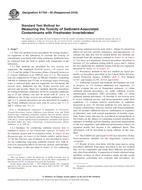
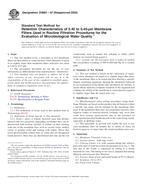 ASTM D3863-87(2011)..
ASTM D3863-87(2011)..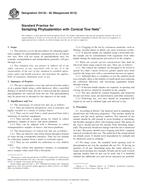 ASTM D4132-82(2012)..
ASTM D4132-82(2012)..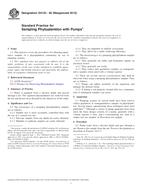 ASTM D4133-82(2012)..
ASTM D4133-82(2012)..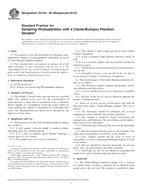 ASTM D4134-82(2012)..
ASTM D4134-82(2012)..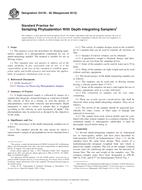 ASTM D4135-82(2012)..
ASTM D4135-82(2012)..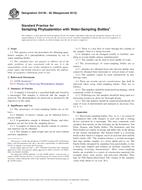 ASTM D4136-82(2012)..
ASTM D4136-82(2012)..
 Cookies
Cookies
